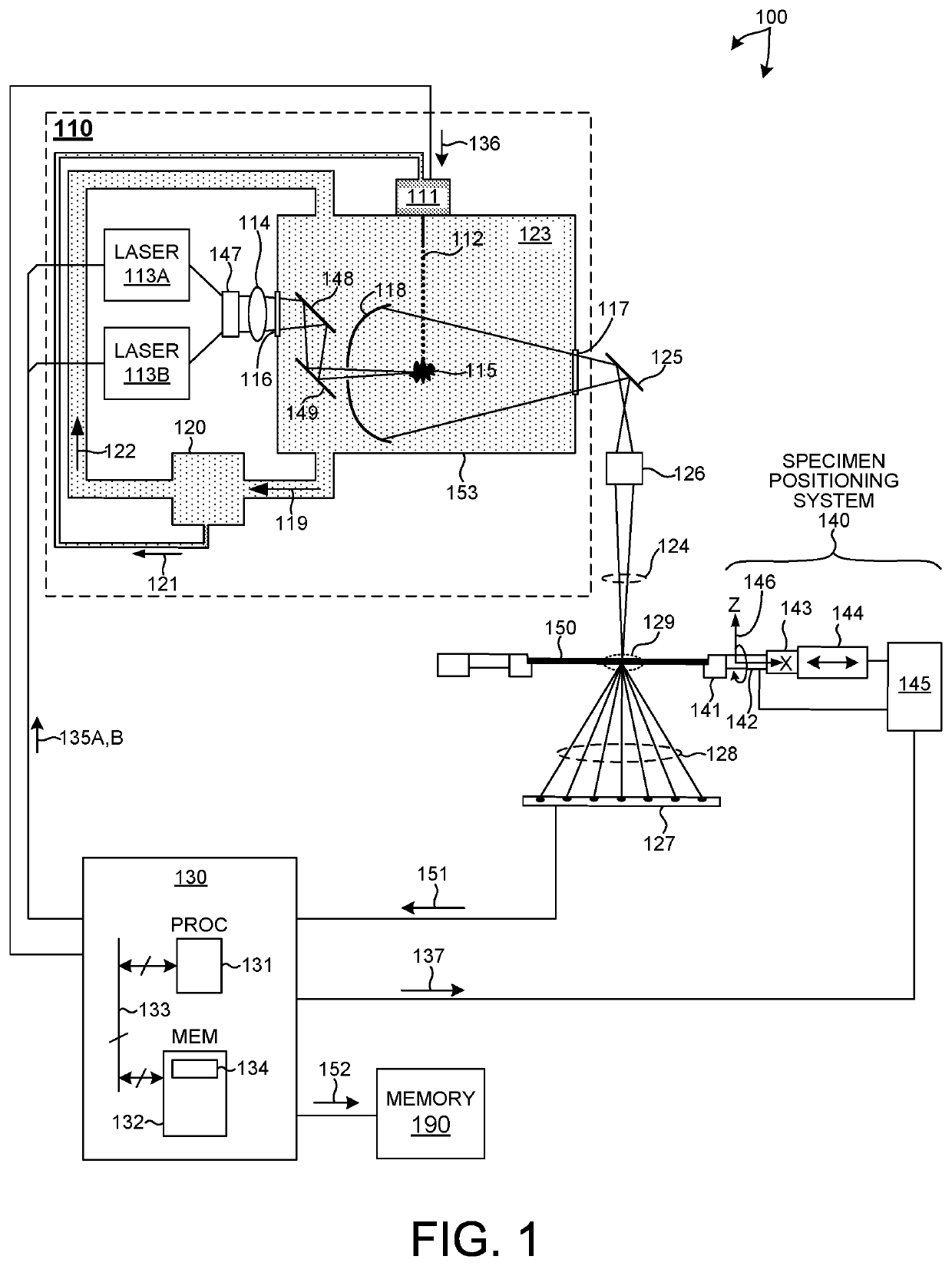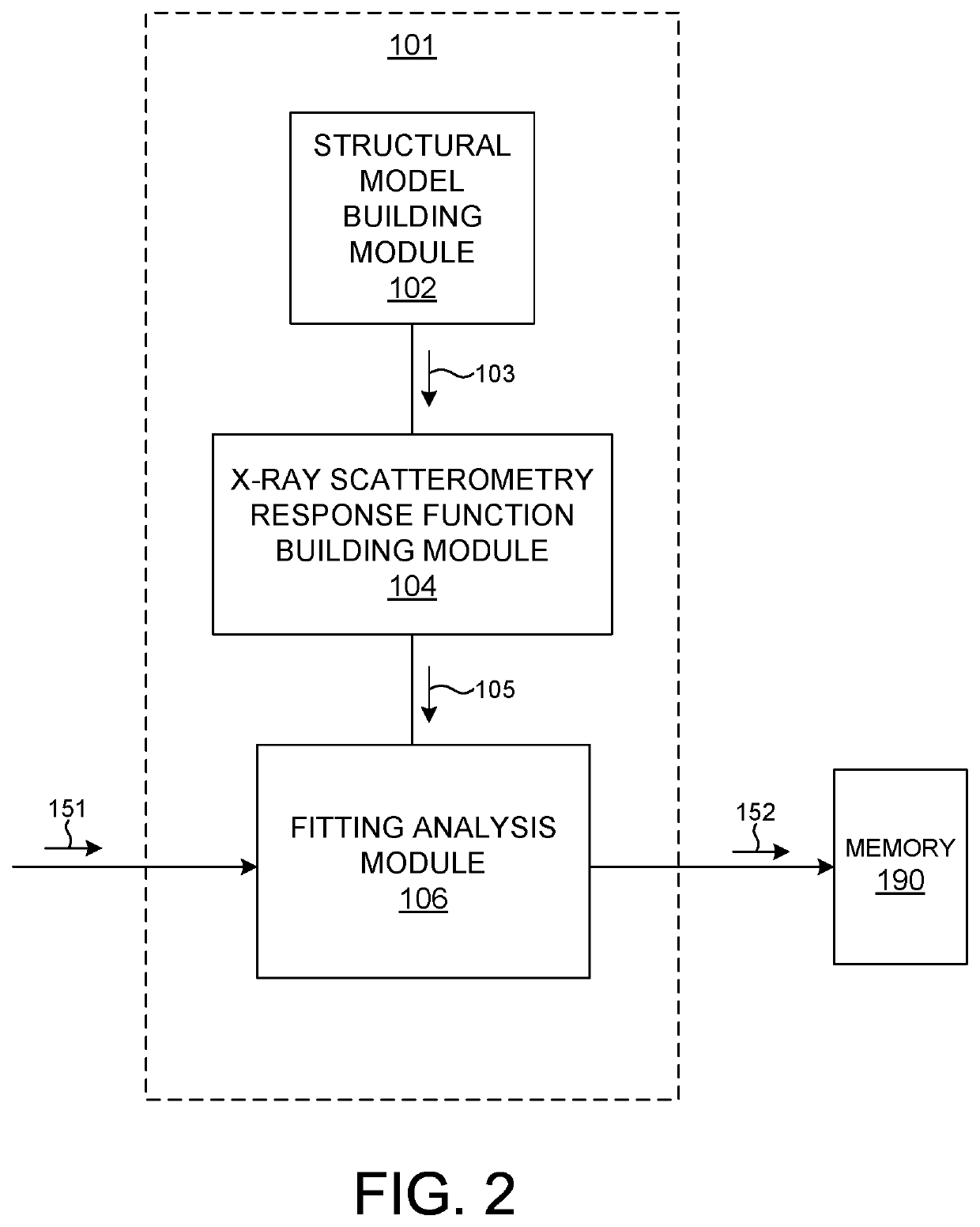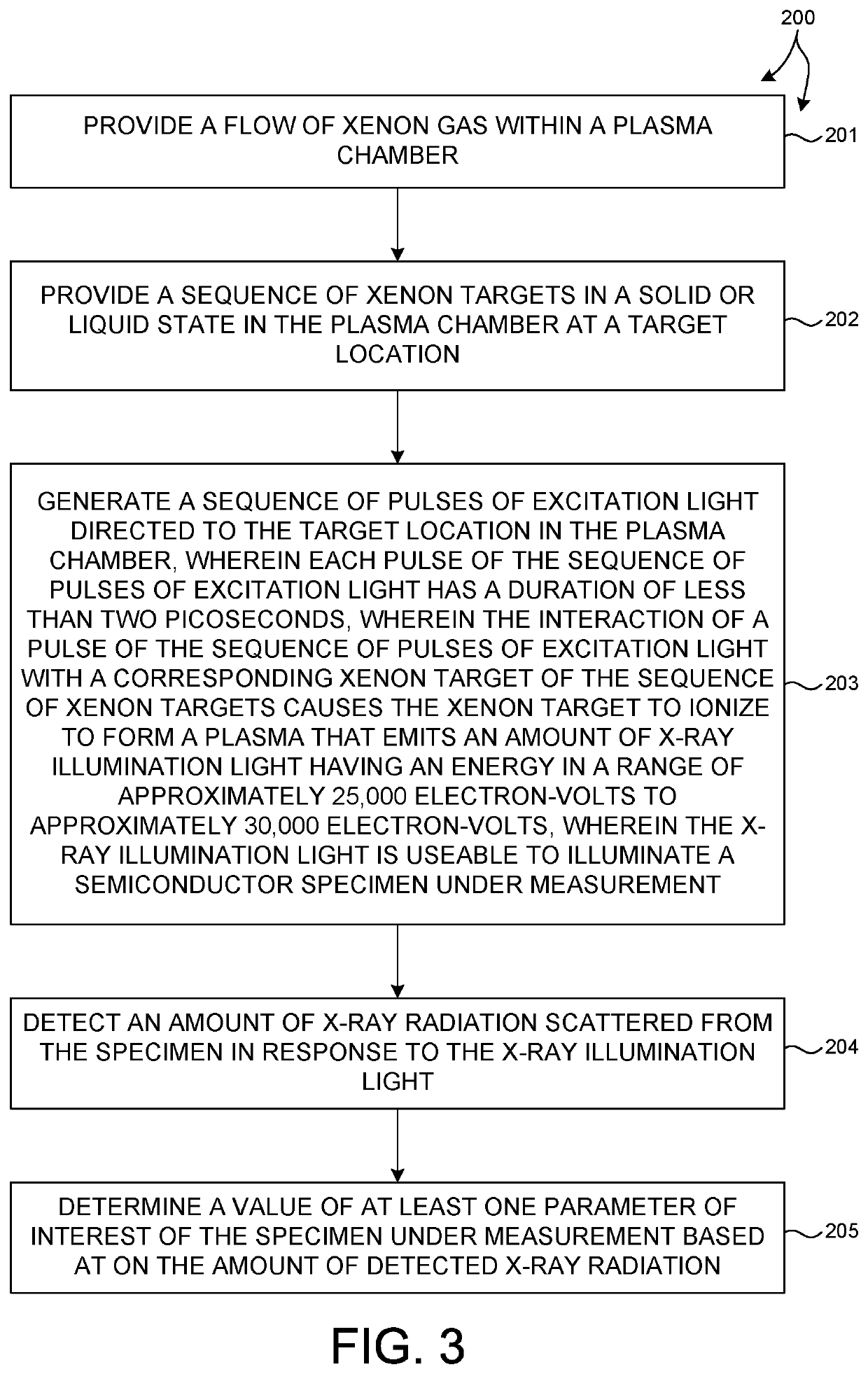Bright and clean x-ray source for x-ray based metrology
a x-ray source and metrology technology, applied in the direction of x-ray tubes, material analysis using wave/particle radiation, instruments, etc., can solve the problems of optical radiation not being able to penetrate to the bottom layer, difficult to characterize, and difficult to achieve the effect of high brightness and low contamination levels
- Summary
- Abstract
- Description
- Claims
- Application Information
AI Technical Summary
Benefits of technology
Problems solved by technology
Method used
Image
Examples
Embodiment Construction
[0024]Reference will now be made in detail to background examples and some embodiments of the invention, examples of which are illustrated in the accompanying drawings.
[0025]Methods and systems for x-ray based semiconductor metrology utilizing a clean, hard X-ray illumination source are described herein. More specifically, a laser produced plasma (LPP) light source generates high brightness (i.e., greater than 1013 photons / (sec·mm2·mrad2) hard x-ray illumination having energy in a range of 25,000 to 30,000 electron volts. To achieve such high brightness, the LPP light source directs a highly focused (e.g., less than 10 micrometer illumination spot on target), very short duration (e.g., less than 2 picoseconds) laser beam to a dense Xenon target in a liquid or solid state. The interaction of the focused laser pulse with the high density Xenon target ignites a plasma. Radiation from the plasma is collected by collection optics and is directed to a specimen under measurement. The resul...
PUM
| Property | Measurement | Unit |
|---|---|---|
| pressure | aaaaa | aaaaa |
| pressure | aaaaa | aaaaa |
| distance | aaaaa | aaaaa |
Abstract
Description
Claims
Application Information
 Login to View More
Login to View More - R&D
- Intellectual Property
- Life Sciences
- Materials
- Tech Scout
- Unparalleled Data Quality
- Higher Quality Content
- 60% Fewer Hallucinations
Browse by: Latest US Patents, China's latest patents, Technical Efficacy Thesaurus, Application Domain, Technology Topic, Popular Technical Reports.
© 2025 PatSnap. All rights reserved.Legal|Privacy policy|Modern Slavery Act Transparency Statement|Sitemap|About US| Contact US: help@patsnap.com



